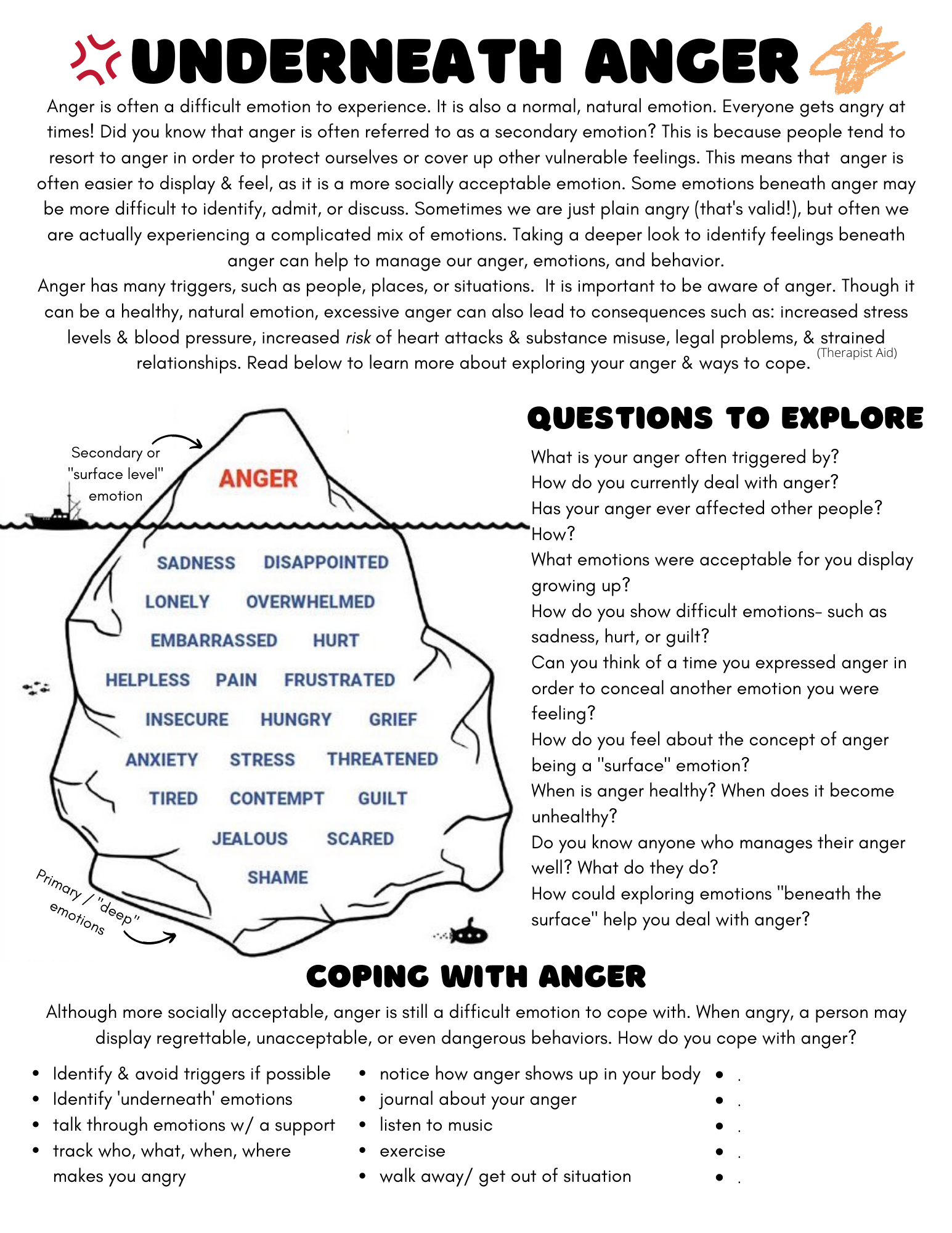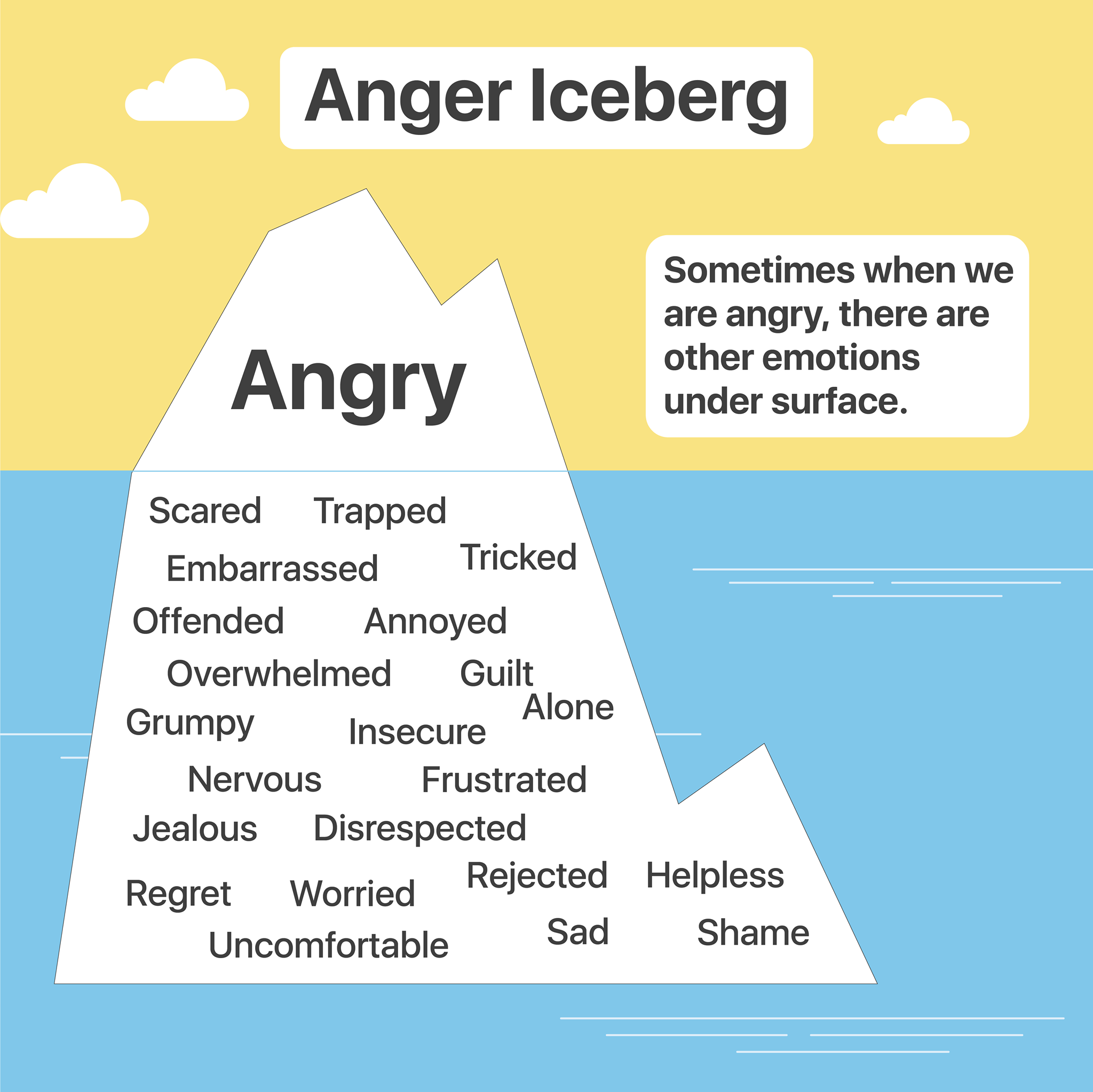
These could include a range of emotions, from fear and disappointment to embarrassment or loss. After a few deep breaths to slow down the heart rate and bring about calmness, the student then reflects on the basic emotions that might have triggered the angry reaction. It acts as a map guiding the exploration of the emotions beneath anger’s surface.įirst, the student is encouraged to recall the last time they experienced a surge of anger and document the specifics of the given situation and their immediate reactions. The anger iceberg worksheet is an excellent resource for therapists, parents, and educators to assist their older students in understanding and managing their own anger. Shop now The Power of the Anger Iceberg Worksheet

Recognizing these deeper emotions is vital for personal growth and effective anger management, as it allows for a healthier expression of feelings. Like an iceberg, a significant portion of our emotional experiences remains hidden under the surface of the water, masked by the overt feeling of anger.Īs the Gottman Institute suggests, these concealed emotions could range from embarrassment and disappointment to fear or sadness. It is often a secondary emotion, a reaction that veils the primary emotions beneath. The iceberg theory of anger proposes that anger is merely the visible tip of a much larger emotional iceberg.

Understanding the Iceberg Theory of Anger It’s designed to help individuals identify their underlying feelings, providing insight into the depth of emotions beneath the iceberg’s visible tip – the anger that everyone sees. The anger iceberg worksheet, a concept pioneered by the Gottman Institute, can prove to be a fantastic tool for such instances.

When faced with expressions of anger, educators, parents, and therapists often find it challenging to help their older students navigate through this common emotion.


 0 kommentar(er)
0 kommentar(er)
